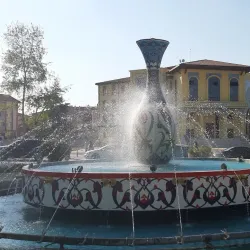Traffic Summary for Kutahya
In 2024, Kutahya's transportation landscape is dominated by car usage, with 100% of commuters relying on personal vehicles. Despite the heavy reliance on cars, the average commute time remains relatively low, indicating efficient traffic flow within the city.
Average Commute Times
- Car - Car commuters in Kutahya spend an average of 20 minutes driving and 5 minutes walking, covering a distance of 10 km.
Traffic Breakdown
Seasonal Trends
Traffic tends to increase during the summer months as tourists visit the region. Winter months see a slight decrease in traffic due to adverse weather conditions.
Commuter Pain Points
Limited public transportation options force reliance on cars. Traffic congestion during peak hours can lead to delays.
Best Travel Times
Early mornings before 8 AM are ideal for avoiding traffic. Late evenings after 7 PM also see reduced traffic congestion.
Event Impacts
Public events and festivals can cause significant traffic disruptions. Planning travel around major events is advisable to avoid delays.
Sustainability Efforts
Kutahya is exploring initiatives to increase the use of electric vehicles. Efforts are underway to expand cycling lanes and pedestrian pathways.
Ride-Sharing Impact
Ride-sharing services are gradually gaining popularity, offering an alternative to car ownership. These services help reduce the number of vehicles on the road, potentially easing congestion.
Traffic Rankings
The Traffic Index for Turkey combines user-contributed data on commute times, traffic dissatisfaction, CO2 emissions, and traffic system inefficiencies in Turkey, to provide insights into overall traffic conditions.
Traffic Data
Overall average travel
Average when primarily using Car
"Key Takeaways"
Promoting public transportation and cycling could significantly reduce CO2 emissions.
Improving road infrastructure may help decrease traffic inefficiency.
Key Indexes
EmissionsKutahya has a high CO2 emission index of 5320, reflecting the city's reliance on cars.
Efforts to reduce emissions could focus on promoting alternative transportation methods.
TimeThe time index of 25 indicates a moderate level of traffic congestion.
Commute times are relatively efficient given the city's car dependency.
InefficiencyThe inefficiency index is 58.65, suggesting room for improvement in traffic management.
Strategies to enhance traffic flow could include better road infrastructure and traffic signal optimization.















